How to Select the Best Omnichannel Customer Experience Software
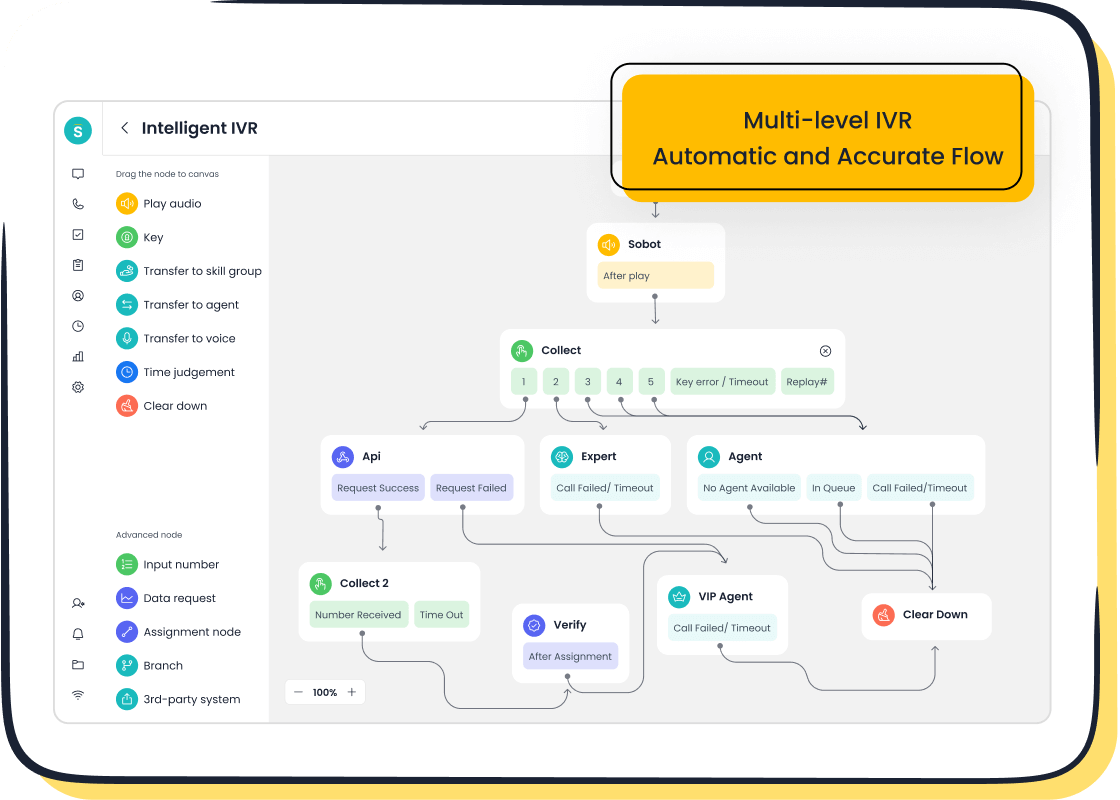
Picking the right omnichannel customer experience software can make or break your business goals. When you match your software to what your customers want, you see real results. For example, about one-third of companies see higher customer satisfaction after switching to an omnichannel experience. Seamless support can boost satisfaction rates up to 67%. Sobot AI and the Sobot call center help you manage every customer touchpoint in one place, making your omnichannel experience smooth and driving up satisfaction. Companies using strong omnichannel management software often see better retention and growth.
Set Business Goals
Define Customer Service Objectives
Before you pick any software, you need to know what you want to achieve. Start by setting clear customer service objectives. Do you want to boost customer satisfaction, improve loyalty, or make your team more efficient? Many businesses choose omnichannel software to help them:
- Give customers fast, helpful support on every channel.
- Make work easier for agents with automation and smart call routing.
- Get better insights from analytics and reports.
- Personalize every interaction using AI.
- Save money by using one platform for all channels.
- Reach more people with multi-language support.
For example, companies that use an effective omnichannel strategy often see big improvements. Salesforce reported a 12% jump in customer satisfaction and an 8% rise in retention after using an omnichannel approach (Salesforce Annual Report, 2022). When you set goals, make sure they are clear, measurable, and realistic. Think about how you will track progress and what success looks like for your business.
Tip: Write down your top three customer service goals. This will help you stay focused when you compare different omnichannel solutions.
Align with Omnichannel Strategy
Now, match your goals with your omnichannel strategy. You want every channel—like chat, email, phone, and social media—to work together. Leading companies use a unified customer database, so agents always see the full picture. This helps customers move between channels without repeating themselves.
Sobot’s omnichannel solution gives you a single workspace for all customer data. You can connect voice, chat, email, and even WhatsApp, making it easy to deliver a seamless experience. When you align your objectives with an effective omnichannel strategy, you break down silos and create a smooth journey for your customers.
- Use technology that brings all channels together.
- Train your team to deliver great service everywhere.
- Keep checking your data to see what works and what needs to change.
A strong omnichannel strategy supports your goals and helps your business grow. With the right tools, you can improve satisfaction, loyalty, and efficiency—all at once.
Map Customer Journeys

Understanding customer journeys is key if you want to deliver a great omnichannel experience. When you map out each step your customers take, you can spot where things go well and where they get stuck. This helps you improve engagement and make every interaction count.
Identify Key Touchpoints
Start by looking at all the places where customers connect with your brand. These touchpoints can include your website, mobile app, social media, email, physical stores, and customer service. Each one plays a role in the overall customer journey. If you want to make your omnichannel strategy work, you need to make sure these touchpoints are connected and consistent.
Here’s a simple way to map out your customer journeys:
- Define your main customer personas. Think about their needs, goals, and behaviors.
- Set clear goals for what you and your customers want to achieve.
- List every key touchpoint—like browsing online, visiting a store, chatting with support, or getting emails.
- Outline the steps your customers take, including what they think and feel at each stage.
- Look for pain points or places where customers drop off.
- Test and improve the journey using feedback and data.
Tip: Use a visual map or timeline to see how customers move from one touchpoint to another. This makes it easier to spot gaps or problems.
Industry research shows that the most critical touchpoints are those that let customers move smoothly between channels. For example, someone might start shopping on your website, ask a question through live chat, and finish the purchase in your store. If these touchpoints are not connected, you risk losing the customer. In fact, 60% of omnichannel customers will switch brands if they face disconnected experiences (source).
Sobot’s omnichannel solution helps you unify all these touchpoints. With Sobot, your team can see every customer interaction in one place, making it easy to deliver consistent service and smooth handoffs.
Analyze Channel Preferences
Not every customer likes to use the same channels. Some prefer chatting online, while others want to call or visit in person. To make your omnichannel approach effective, you need to know which channels your customers use most and why.
You can analyze channel preferences by looking at different types of data:
| Data Source | What It Tells You | Example Use Case |
|---|---|---|
| Website and App Analytics | How customers browse, click, and buy | See which pages get the most visits |
| Social Media Engagement | Likes, shares, comments, and brand mentions | Track which posts get the most attention |
| Transaction Data | What, when, and how customers buy | Spot trends in online vs. in-store purchases |
| Customer Service Records | Support tickets, chat logs, and feedback | Find out which channels get the most questions |
| Surveys and Reviews | Customer opinions and satisfaction | Learn why customers prefer certain channels |
When you combine these data sources, you get a clear picture of customer engagement and preferences. This helps you personalize the customer journey and deliver messages where they matter most. For example, if you see that most of your customers use WhatsApp for support, you can focus on making that channel even better.
Sobot’s platform makes it easy to track and analyze channel usage. You can see real-time data on customer engagement, spot trends, and adjust your strategy quickly. This means you can offer more personalization and improve the overall customer journey.
Note: Personalization is not just about using a customer’s name. It’s about understanding their habits and reaching them on the channels they like best.
Mapping customer journeys and analyzing channel preferences help you create a seamless omnichannel experience. When you know where your customers are and what they want, you can boost satisfaction and loyalty.
Essential Features in Omnichannel Customer Experience Software
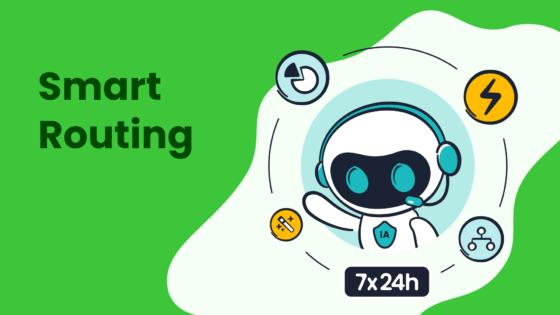
Choosing the right omnichannel customer experience software means looking for features that help you deliver a seamless customer experience across every channel. You want tools that make it easy for your team to connect, automate, analyze, and protect every interaction. Let’s break down the must-have features you should look for.
Integration and Data Centralization
Integration is the backbone of any strong omnichannel experience. You need software that brings together all your channels—chat, email, phone, social media, and more—so your team can see every customer interaction in one place. This is what makes a unified customer experience possible.
When you use a platform like Sobot, you get a unified workspace where agents can manage calls, chats, emails, and even WhatsApp messages without switching screens. Sobot’s omnichannel solution connects with popular CRM systems and other business tools, so all your customer data stays up to date and easy to access. This means your agents always have the full story, no matter which channel the customer uses.
Here’s a quick look at how top platforms handle integration and data centralization:
| Capability/Tool Type | Example Tools/Platforms | Role in Omnichannel Integration and Data Centralization |
|---|---|---|
| Cloud-based Data Warehouse | BigQuery | Stores all your omnichannel data for easy analysis and business agility |
| Customer Data Platforms (CDPs) | Segment, Klayvio | Unifies customer data from every channel for a single, clear view |
| Integration Platforms | Hapi | Connects different systems to your CRM for seamless data flow |
| CRM Platforms | Salesforce | Centralizes customer relationship data and supports personalized journeys |
| AI and Real-time Analytics | Sigma Computing, Looker | Delivers real-time insights and supports personalization |
With Sobot, you don’t have to worry about data silos. Everything comes together in one place, making it easier to deliver personalized support and track every step of the customer journey. This kind of integration helps you spot trends, fix problems fast, and keep your customers happy.
Tip: Always check if your software can connect with your existing tools. The more connected your systems are, the smoother your omnichannel experience will be.
Automation and AI Capabilities
Automation and AI are game changers for omnichannel customer experience software. They help you work smarter, not harder. With AI-powered chatbots and voice assistants, you can offer 24/7 support, answer common questions instantly, and free up your agents for more complex issues.
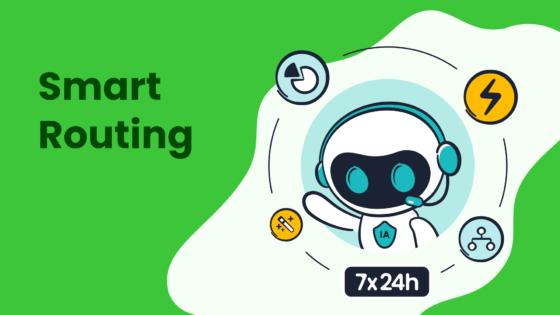
Sobot’s AI-driven chatbots handle routine queries in over 50 languages, making sure your customers get fast, accurate answers any time of day. The Voice/Call Center uses AI-powered voicebots to route calls, recognize intent, and even provide real-time assistance to agents. This means your team can focus on delivering personalized support where it matters most.
Here’s what automation and AI can do for your omnichannel experience:
- AI chatbots and virtual assistants provide instant, round-the-clock support.
- Predictive analytics help you anticipate customer needs and solve problems before they escalate.
- Automated workflows handle repetitive tasks, like ticket routing and follow-ups, saving your team hours each week.
- Sentiment analysis tools spot unhappy customers in real time, so you can step in and turn things around.
- AI-driven journey orchestration personalizes every interaction, adapting to customer behavior across channels.
Recent studies show that companies using AI-driven automation see efficiency gains of 30-50% and a 20% boost in customer satisfaction. Sobot’s automation features help you scale your service without losing the personal touch, making your omnichannel experience both efficient and human.
Note: Automation doesn’t replace your team—it empowers them to deliver better, faster, and more personalized customer experiences.
Analytics and Reporting
You can’t improve what you can’t measure. That’s why analytics and reporting are essential features in any omnichannel customer experience software. You need tools that turn raw data into clear, actionable insights.
Sobot’s omnichannel solution gives you real-time dashboards and detailed reports on every channel. You can track key metrics like CSAT (Customer Satisfaction Score), NPS (Net Promoter Score), average handle time, and first contact resolution. The Voice/Call Center offers call tracking, recording, and speech analytics, so you can spot trends and coach your team for better results.
Here are some analytics and reporting tools you should look for:
- CSAT and feedback management to capture and analyze customer opinions.
- Customer journey tracking to see how people move across channels.
- Interaction and speech analytics to understand what customers are saying and how agents respond.
- Business intelligence dashboards that visualize data and highlight areas for improvement.
- Social listening tools to monitor brand mentions and customer sentiment online.
With these tools, you get a 360-degree view of your customer engagement. You can see what’s working, where customers get stuck, and how to make your omnichannel experience even better. Sobot’s analytics help you make data-driven decisions that boost satisfaction and loyalty.
Pro Tip: Use analytics to set goals, track progress, and celebrate wins with your team. Data is your best friend when it comes to delivering an enhanced customer experience.
Security and Compliance
Security and compliance are non-negotiable, especially if you work in regulated industries like finance or healthcare. Your omnichannel customer experience software must protect sensitive data and follow industry standards.
Sobot takes security seriously. The platform uses encrypted data transfer, secure cloud storage, and multi-factor authentication to keep your customer information safe. With a system uptime of 99.99%, you can trust that your operations will run smoothly and securely.
Key security and compliance features to look for include:
- Multi-factor authentication for extra protection.
- SSL certificates for secure web connections.
- End-to-end encryption for all messages and calls.
- Tokenization to protect sensitive payment data.
- Compliance with standards like PCI DSS for payment security and GDPR for data privacy.
Sobot’s secure, scalable operations mean you can grow your business and handle high volumes of customer interactions without worrying about data breaches or downtime. This peace of mind lets you focus on delivering a seamless customer experience and building trust with your customers.
Remember: Security isn’t just about technology—it’s about trust. Make sure your software partner puts customer data protection first.
When you choose omnichannel customer experience software with these essential features, you set your business up for success. Integration, automation, analytics, and security work together to create a unified, personalized, and efficient omnichannel experience. Sobot’s solutions bring all these elements together, helping you deliver personalized support, boost engagement, and drive growth.
Evaluate Omnichannel Management Software Options
Choosing the right omnichannel management software can feel overwhelming, but you can make it easier by focusing on three main areas: vendor reputation and support, usability and training, and scalability and flexibility. Let’s break down what to look for so you can boost customer satisfaction and keep your business growing.
Vendor Reputation and Support
You want an omnichannel management software vendor you can trust. Start by checking the basics: company size, years in business, and where they’re based. Look for vendors with a strong track record in omnichannel solutions and a clear commitment to customer satisfaction. Reliable vendors, like Sobot, show their dedication through high system uptime (Sobot offers 99.99%), official partnerships, and a large, diverse customer base.
Great support means more than just answering questions. Top vendors use quality assurance programs to monitor every channel, train their teams, and keep service consistent. They also offer multilingual support and secure data handling. Sobot stands out with its global presence, advanced security, and responsive support team. Real-world stories, like Opay’s jump from 60% to 90% satisfaction after switching to Sobot’s omnichannel management software, show the impact of choosing the right partner.
Usability and Training
Easy-to-use omnichannel management software helps your team work faster and happier. Look for platforms with interactive onboarding, in-app help, and personalized training. These features help your staff learn quickly and reduce mistakes. For example, companies that use step-by-step tutorials and ongoing learning resources see faster adoption and better engagement. Sobot’s unified workspace and clear interface make it simple for agents to handle every channel, boosting satisfaction for both customers and staff.
| Usability Feature | What It Does | Why It Matters |
|---|---|---|
| Interactive Onboarding | Guides new users step by step | Speeds up learning |
| Contextual Help | Offers tips right when you need them | Reduces confusion |
| Personalized Training | Matches training to each role | Increases confidence |
Scalability and Flexibility
Your omnichannel management software should grow with you. Look for solutions that handle more channels, higher traffic, and new features as your business expands. Leading platforms use cloud technology, real-time analytics, and easy integrations to keep things running smoothly. Sobot’s omnichannel management software supports global operations, connects with your favorite tools, and adapts to your needs. This flexibility means you can keep delivering great engagement and satisfaction, no matter how fast you grow.
Tip: Always ask vendors how their omnichannel management software handles growth and change. The right choice will help you keep customer satisfaction high as your business evolves.
Cost and Value in Omnichannel Customer Service
Pricing Models
When you look at omnichannel customer service software, you’ll see a range of pricing models. Some platforms charge per user each month, while others offer custom pricing based on your needs. For example, NiCE CXone starts at about $71 per user per month for basic digital customer service channels. If you want advanced features like AI and analytics, the price can go up to $249 per user per month. Sprinklr uses custom pricing, which means you get a quote based on your company’s size and the features you need.
Here’s a quick comparison of pricing tiers from other platforms:
| Pricing Tier / Edition | Zendesk Price (per user/month) | Pega Price (per user/month) |
|---|---|---|
| Entry Level | $19 | $97 |
| Mid Tier | $55 | $165 |
| Enterprise / Advanced Features | $115 | $260 |
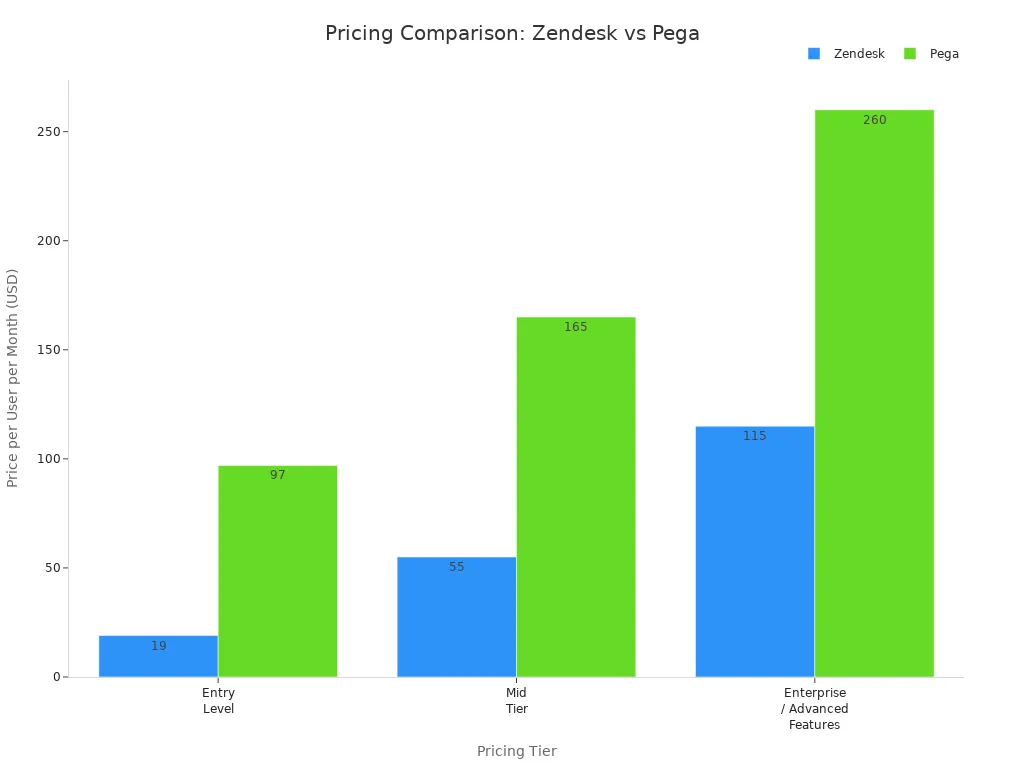
Transparent pricing helps you plan your budget and avoid hidden costs. Sobot offers an all-in-one solution with clear pricing, so you know exactly what you’re paying for. You get features like AI chatbots, unified workspaces, and analytics without worrying about surprise fees.
Tip: Always check what’s included in each plan. Some platforms charge extra for things like analytics or integrations, which can raise your total cost.
Onboarding and ROI
A smooth onboarding process helps you get value from your software faster. Good onboarding lets you reuse data across channels, so you don’t have to enter the same information over and over. Automation speeds up compliance checks and document reviews, making everything quicker. Personalized onboarding journeys help your team learn what matters most for your business.
Companies with strong onboarding see results fast. You can get up to 40% quicker time-to-value for new customers. Structured onboarding can boost customer retention by 20%. For example, a SaaS company saw a 30% drop in time-to-first-value and a 25% jump in retention after using personalized onboarding.
When you use Sobot, you get guided onboarding, live training, and self-service resources. This helps your team get up to speed quickly and start seeing benefits right away. You’ll notice faster call handling, more first-call resolutions, and lower costs. These improvements lead to happier customers and a better return on your investment.
Note: Track your onboarding metrics, like activation rate and time-to-value. This helps you see how fast you’re getting results and where you can improve.
Omnichannel Experience Checklist
Step-by-Step Selection Guide
Ready to pick the best omnichannel management software? Use this simple checklist to guide your decision. Each step helps you build a strong omnichannel experience that keeps your customers happy and your team working smoothly.
- Define your business goals. Decide what you want to achieve with your omnichannel experience. Maybe you want faster support, better personalization, or higher customer satisfaction.
- Map your customer journeys. Look at how customers move between channels. Find out where they get stuck or need more help.
- Centralize customer data. Make sure your omnichannel management software brings all customer info together. This helps you give fast, accurate answers.
- Check integration with your current tools. Your software should connect with your CRM, ecommerce, and other systems. Sobot, for example, offers easy integration with many platforms.
- Plan for growth. Choose omnichannel management software that can handle more customers and new channels as your business grows.
- Use automation and AI. Look for features like chatbots and smart routing. Sobot’s AI-powered tools help you offer 24/7 support and handle routine tasks.
- Track analytics and results. Pick software that shows you real-time data on customer behavior and campaign results.
- Streamline order fulfillment. Make sure your omnichannel experience helps you process orders quickly and keep customers updated.
- Focus on ease of use. Your team should find the omnichannel management software simple and clear.
- Compare costs and support. Look at pricing, support options, and what’s included. Sobot offers transparent pricing and strong customer support.
Tip: Use free trials or demos to see how the omnichannel management software works in real life.
Key Questions for Vendors
When you talk to vendors, ask these questions to make sure their omnichannel management software fits your needs. These questions help you find a solution that supports a great omnichannel experience and real personalization.
- How does your software handle growth and changing needs?
- Can your platform give us a single view of each customer across all channels?
- What automation and AI features do you offer for 24/7 support?
- Does your omnichannel management software support messaging on email, social media, SMS, and push notifications?
- How do you help us personalize the customer journey based on behavior and preferences?
- What security and compliance standards do you follow?
- How easy is it to integrate your software with our current systems?
- What training and support do you provide for onboarding and ongoing use?
- How do you measure success and what analytics do you offer?
- What are the total costs, including setup, subscription, and any extra fees?
Note: Companies with strong omnichannel experience keep 89% of their customers, while others lose more customers (source). Asking the right questions helps you choose omnichannel management software that delivers results.
Choosing the right omnichannel experience software starts with knowing your goals and what your customers need. When you use a strategic, needs-based approach, you see real results:
- Seamless integration across channels boosts communication and satisfaction.
- Personalization and strong teamwork lead to better customer experience and higher satisfaction.
- Data-driven strategies help you improve satisfaction and business growth.
Sobot’s solutions have helped brands like OPPO and J&T Express reach up to 93% customer satisfaction and a 234% ROI. You can see how Sobot drives satisfaction and business growth in the chart below:
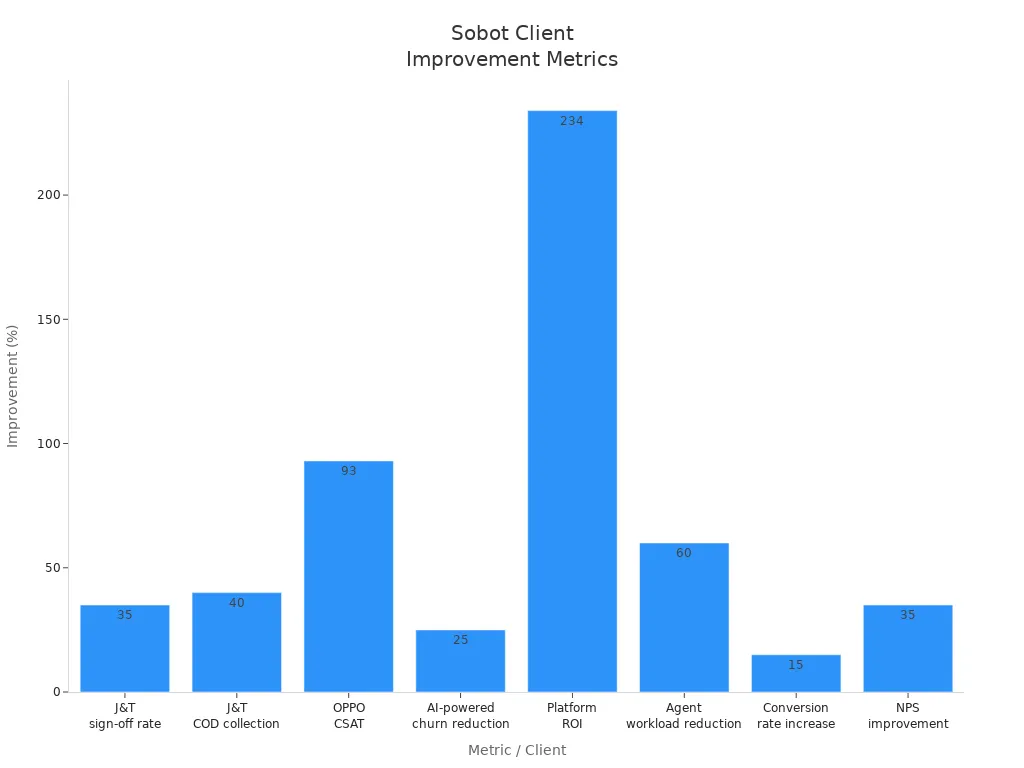
Use the steps and checklist from this guide to pick the best software for your business. Start today and watch your customer satisfaction soar!
FAQ
What is omnichannel customer experience software?
Omnichannel customer experience software lets you manage all customer conversations in one place. You can connect chat, email, phone, and social media. This helps you give fast, personal support. Sobot’s platform does this by unifying every channel for a smooth experience.
How does Sobot help improve customer satisfaction?
Sobot’s omnichannel customer experience software gives your team a single workspace. You see every customer’s history, so you answer questions faster. Opay used Sobot and raised their satisfaction rate from 60% to 90%. That’s a huge jump! Read more.
Can I integrate Sobot with my current systems?
Yes! Sobot’s omnichannel customer experience software connects with popular CRMs and business tools. You can keep your data in sync and avoid switching between apps. This saves time and helps your team work better.
Is my customer data safe with Sobot?
Absolutely. Sobot uses encrypted data transfer and secure cloud storage. The system has 99.99% uptime. You can trust Sobot to keep your customer information safe while you deliver a seamless omnichannel experience.
Tip: Always check if your omnichannel customer experience software meets industry security standards like GDPR or PCI DSS.
See Also
Comprehensive Overview Of Omnichannel Call Center Platforms
Step-By-Step Process For Deploying Omnichannel Contact Centers
How To Select The Most Effective Chatbot Software
